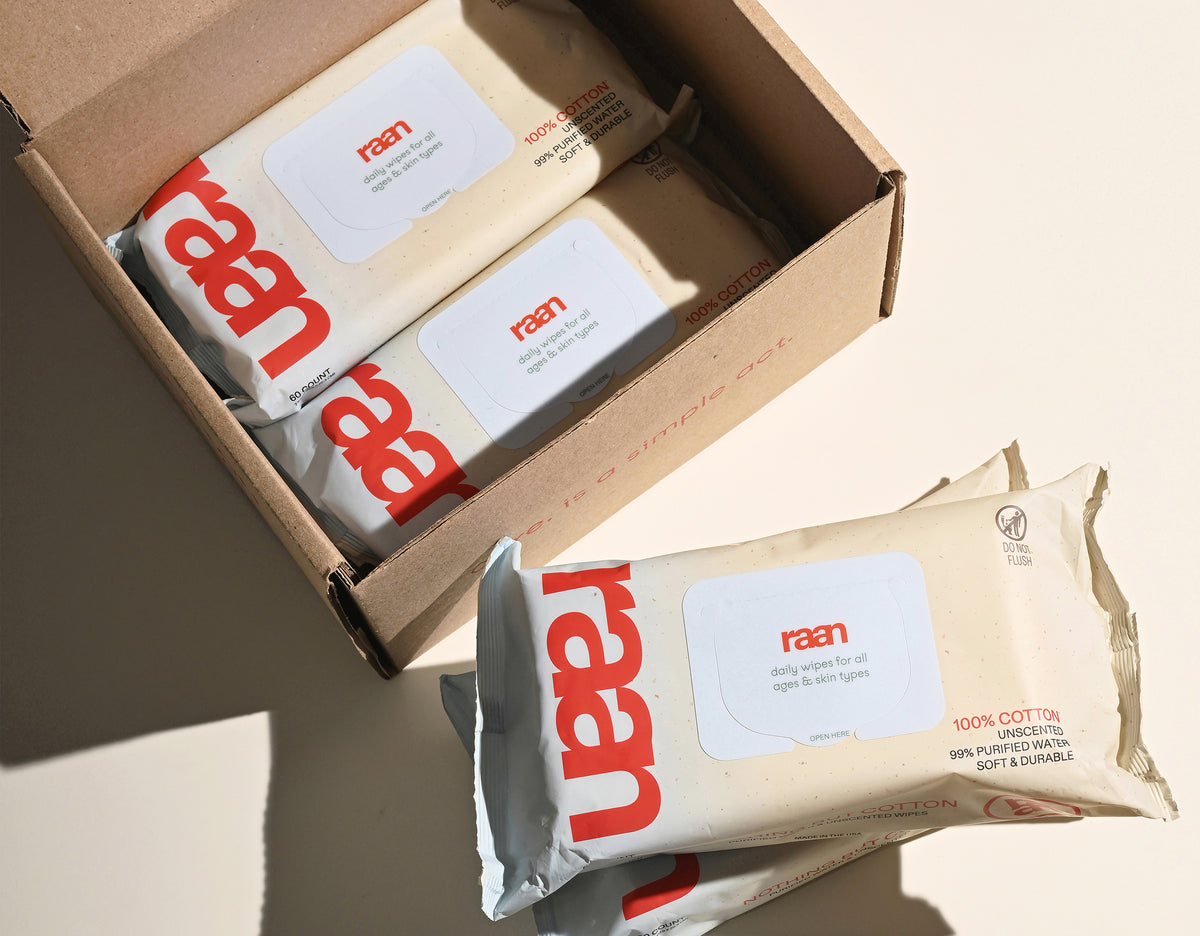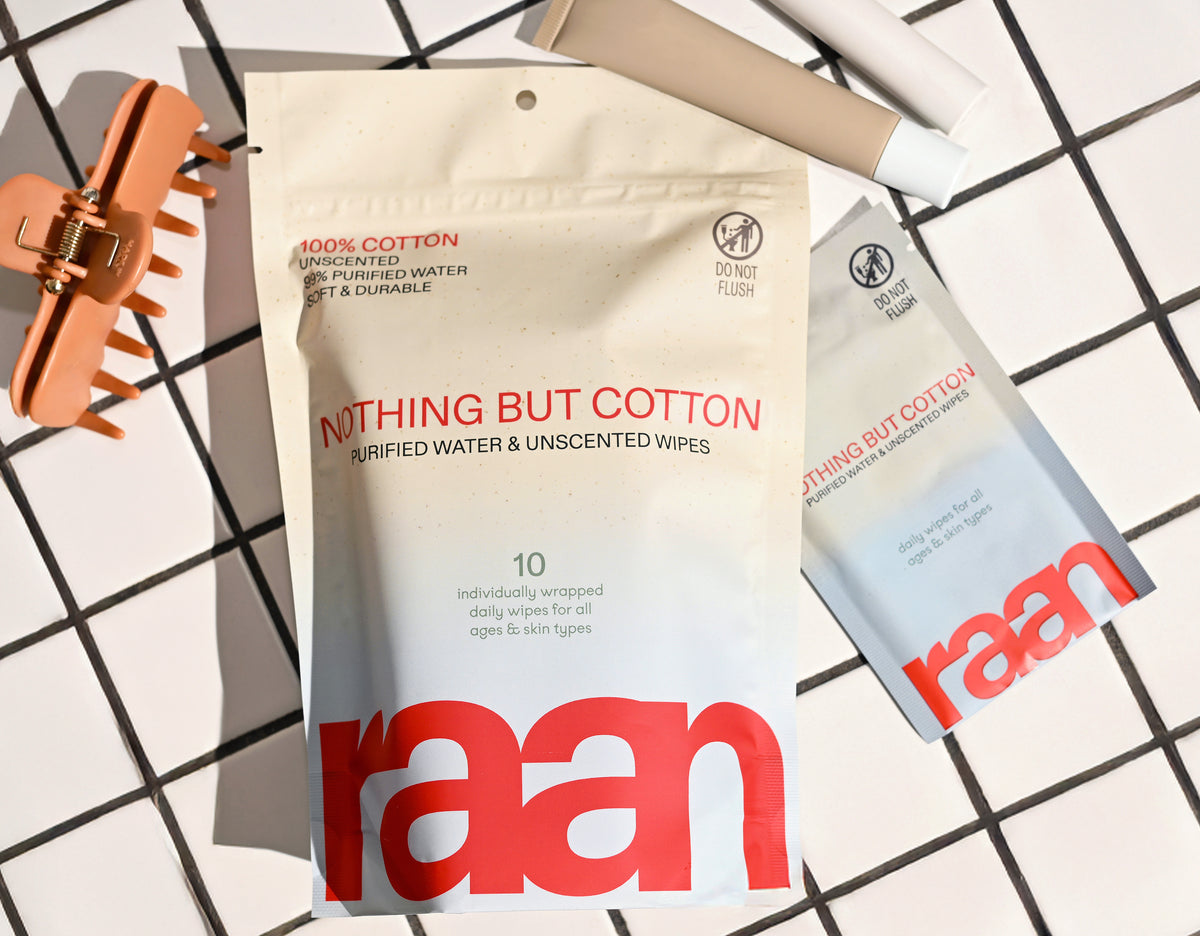The Real Challenge of Finding the Best Dry Skin Moisturizer
If you've ever stood in the skincare aisle feeling overwhelmed by endless moisturizer options, you're not alone. Finding the best dry skin moisturizer can feel like searching for a needle in a haystack — especially when your skin is tight, flaky, and begging for relief.
Key Takeaways
- The best dry skin moisturizer contains a combination of humectants, occlusives, and emollients to effectively hydrate and protect the skin.
- Look for fragrance-free and hypoallergenic moisturizers with ingredients like glycerin, shea butter, and ceramides.
- These key ingredients help repair the skin barrier while locking in moisture for lasting relief.
- Choosing the right moisturizer can be overwhelming due to the many options available on the market.
- Dry skin often feels tight and flaky, making it essential to find a product that provides immediate and effective hydration.
Table of Contents
- The Real Challenge of Finding the Best Dry Skin Moisturizer
- Understanding Dry Skin: More Than Just Surface-Level Discomfort
- How the Best Moisturizers Actually Work
- Key Ingredients That Actually Work for Dry Skin
- Choosing the Right Moisturizer for Your Specific Needs
- Proper Application and Daily Routine for Maximum Results
- Troubleshooting Common Moisturizer Problems
- Adapting Your Routine by Season and Environment
- Finding Your Perfect Moisturizer: Key Takeaways
Here's what makes this search so frustrating: dry skin isn't just uncomfortable. It's your skin barrier crying out for help, and the wrong moisturizer can leave you right back where you started — or worse, dealing with irritation on top of dryness.
The good news? Understanding what actually works doesn't require a chemistry degree. It requires knowing what your skin needs, which ingredients deliver, and how to cut through the marketing noise to find products that actually perform.
Whether you're dealing with occasional dryness or chronic skin tightness, this guide will walk you through everything you need to know. We'll cover the science behind effective moisturizers, decode ingredient lists, and help you identify what works for your specific skin type and concerns.
From lightweight facial creams to rich night formulas, we'll explore the full spectrum of moisturizing options. You'll learn why some products leave your skin feeling greasy while others seem to disappear without a trace — and most importantly, how to find the sweet spot that leaves your skin comfortable, hydrated, and healthy.
Understanding Dry Skin: More Than Just Surface-Level Discomfort

Dry skin isn't just about needing more moisture — it's about a compromised skin barrier that's struggling to do its job. When your skin feels tight after washing, develops flaky patches, or becomes itchy and uncomfortable, these are signs that your skin's protective barrier needs serious support.
What Dry Skin Actually Looks and Feels Like
Recognizing dry skin goes beyond the obvious flakiness. Your skin might feel:
- Tight and uncomfortable, especially after cleansing
- Rough or scaly to the touch
- Itchy or irritated without obvious cause
- Dull or lackluster in appearance
- More sensitive to products that never bothered you before
These symptoms can show up anywhere on your body, but facial dryness often feels most urgent because it's visible and affects how makeup applies and how comfortable you feel throughout the day.
Why Your Skin Gets Dry in the First Place
Understanding the root causes helps you choose the right moisturizer and avoid making the problem worse. Common culprits include:
- Environmental factors
- Cold air, low humidity, and indoor heating strip moisture from your skin faster than it can replenish itself.
- Over-cleansing
- Hot water and harsh soaps wash away your skin's natural oils, leaving the barrier compromised.
- Age-related changes
- As we age, our skin produces less natural oil and loses its ability to retain moisture efficiently.
- Genetics and skin conditions
- Some people naturally produce less sebum, while conditions like eczema make maintaining skin barrier function more challenging.
The Science Behind Your Skin's Moisture Barrier
Your skin's outermost layer — the stratum corneum — acts like a brick wall. The "bricks" are dead skin cells, and the "mortar" is made of lipids like ceramides, cholesterol, and fatty acids. This barrier serves two crucial functions:
Keeping water in: A healthy barrier prevents transepidermal water loss, maintaining your skin's hydration levels throughout the day.
Keeping irritants out: This same barrier protects against environmental pollutants, allergens, and bacteria that could cause irritation or infection.
When this barrier is compromised — whether from harsh products, environmental damage, or underlying skin conditions — your skin loses moisture faster and becomes more susceptible to irritation. This is why finding the right moisturizer isn't just about adding hydration; it's about supporting and repairing this essential protective function.
The most effective moisturizers for dry skin work on multiple levels: they provide immediate hydration, support barrier repair, and create a protective seal to prevent future moisture loss. Understanding this helps explain why some products provide temporary relief while others offer lasting improvement.
How the Best Moisturizers Actually Work
Not all moisturizers are created equal, and understanding how they work helps you choose products that deliver real results rather than temporary relief. The most effective moisturizers for dry skin use a multi-pronged approach to hydration and barrier repair.
The Three Ways Moisturizers Hydrate Your Skin
Effective moisturizers work through three distinct mechanisms, and the best formulas combine all three:
Attracting moisture: Humectant ingredients pull water from the environment and deeper skin layers to the surface, providing immediate hydration.
Sealing in moisture: Occlusive ingredients create a protective barrier on your skin's surface, preventing water loss throughout the day.
Smoothing and softening: Emollient ingredients fill in the gaps between skin cells, creating a smoother texture and supporting barrier function.
This is why a simple water-based gel might feel refreshing initially but leave your skin feeling tight an hour later, while a well-formulated cream provides lasting comfort and improvement over time.
Different Types of Moisturizers and When to Use Them
The texture and formulation of your moisturizer should match your skin's needs and the level of dryness you're experiencing:
Gels and serums are water-based and lightweight, making them ideal for mild dryness or layering under heavier products. They typically contain humectants like hyaluronic acid but may not provide enough occlusion for very dry skin.
Lotions have a higher water content and lighter texture, making them suitable for daily facial use or mild to moderate dryness. They absorb quickly and work well under makeup.
Creams contain more oils and emollients, providing richer hydration for moderate to severe dryness. They're often the sweet spot for dry skin, offering substantial moisture without being overly heavy.
Ointments are the heaviest option, with high concentrations of occlusive ingredients. They're most effective for severely dry, cracked, or compromised skin but can feel greasy and may not be practical for daily facial use.
The key is matching the richness of your moisturizer to your skin's current needs. You might use a lighter lotion in summer and switch to a richer cream in winter, or apply a lightweight facial cream during the day and a more intensive formula at night.
Understanding these mechanisms helps explain why some moisturizers work better than others for your specific skin type and concerns. The most effective products for dry skin typically combine multiple approaches, providing both immediate relief and long-term barrier support.
Key Ingredients That Actually Work for Dry Skin

The difference between a moisturizer that provides temporary relief and one that delivers lasting hydration comes down to ingredients. Understanding what to look for — and what to avoid — helps you cut through marketing claims and find formulas that truly support your skin barrier.
Humectants: The Water Magnets
Humectants are your skin's hydration heroes. These ingredients pull moisture from the environment and deeper layers of your skin to the surface, providing immediate plumping and smoothing effects.
Hyaluronic acid is the gold standard humectant, capable of holding up to 1,000 times its weight in water. It works at multiple molecular weights — larger molecules hydrate the surface while smaller ones penetrate deeper for lasting moisture.
Glycerin is a gentle, effective humectant that's well-tolerated by sensitive skin. It's often found in higher concentrations in drugstore moisturizers, making it an accessible option for consistent hydration.
Sodium hyaluronate is a smaller molecule version of hyaluronic acid that penetrates more easily, making it particularly effective for plumping fine lines and delivering moisture to deeper skin layers.
Occlusives: The Moisture Sealers
Occlusives create a protective barrier on your skin's surface, preventing transepidermal water loss and locking in the hydration provided by humectants.
Petrolatum is the most effective occlusive, reducing water loss by up to 99%. While it can feel heavy, it's non-comedogenic and highly effective for severely dry or compromised skin.
Dimethicone is a silicone that provides occlusive benefits with a lighter feel. It creates a breathable barrier that doesn't clog pores, making it suitable for facial use and acne-prone skin.
Squalane is a lightweight oil that mimics your skin's natural sebum. It provides occlusive benefits while also delivering emollient properties, making it ideal for those who want moisture without heaviness.
Emollients: The Skin Smoothers
Emollients fill in the gaps between skin cells, creating a smoother surface and supporting barrier function. They're essential for addressing the rough, flaky texture that comes with dry skin.
Ceramides are lipids that naturally occur in your skin barrier. Topical ceramides help restore the skin's protective function and are particularly beneficial for those with compromised barriers or conditions like eczema.
Shea butter is a rich emollient with anti-inflammatory properties. It provides substantial moisture while soothing irritation, making it excellent for very dry or sensitive skin.
Niacinamide (vitamin B3) isn't just an emollient — it actively supports barrier function, reduces inflammation, and helps regulate oil production. It's particularly valuable for those with dry skin who also experience occasional breakouts.
The Most Effective Ingredient Combinations
The best moisturizers for dry skin combine multiple ingredient types for comprehensive hydration:
| Skin Concern | Ideal Combination | Why It Works |
|---|---|---|
| Severe dryness | Hyaluronic acid + ceramides + petrolatum | Attracts moisture, repairs barrier, seals everything in |
| Sensitive dry skin | Glycerin + niacinamide + squalane | Gentle hydration with anti-inflammatory support |
| Aging dry skin | Sodium hyaluronate + peptides + shea butter | Deep hydration with collagen support and rich emollience |
| Acne-prone dry skin | Hyaluronic acid + niacinamide + dimethicone | Hydration without clogging pores, plus oil regulation |
Ingredients to Avoid When You Have Dry Skin
Some common skincare ingredients can worsen dryness or irritate already compromised skin:
Denatured alcohol (alcohol denat.) strips moisture and can further compromise your skin barrier. Look for fatty alcohols like cetyl alcohol instead, which are actually beneficial emollients.
Strong fragrances and essential oils can trigger irritation in dry, sensitive skin. Opt for fragrance-free formulas or those with minimal, hypoallergenic scenting.
High concentrations of acids (salicylic acid, glycolic acid) can be too harsh for very dry skin. If you need exfoliation, use these ingredients sparingly and always follow with a rich moisturizer.
The key to finding your ideal moisturizer is understanding which ingredients address your specific concerns. Whether you need intensive barrier repair, lightweight daily hydration, or something in between, focusing on proven ingredients rather than marketing claims will guide you to products that actually deliver results.
Choosing the Right Moisturizer for Your Specific Needs
Finding the best dry skin moisturizer isn't about finding the most expensive or most popular product — it's about matching the right formula to your skin's current condition and lifestyle needs. Your ideal moisturizer should address your level of dryness while working with, not against, your other skincare concerns.
For Extremely Dry, Compromised Skin
When your skin is severely dry, cracked, or constantly uncomfortable, you need heavy-duty hydration that prioritizes barrier repair over elegant texture.
Look for: Thick creams or ointments with high concentrations of occlusives like petrolatum or lanolin, combined with barrier-repairing ceramides and soothing ingredients like colloidal oatmeal. For gentle cleansing and prepping your skin before applying moisturizer, Nothing But Cotton Wipes, Unscented can be an excellent addition to your routine, especially if you have sensitive or compromised skin.
Application strategy: Apply immediately after showering while skin is still damp, and reapply throughout the day as needed. Don't worry about the product feeling heavy — your skin needs intensive support.
Best timing: Use richer formulas at night when texture isn't a concern, and consider a lighter but still substantial cream for daytime use.
For Sensitive, Reactive Skin
Sensitive skin requires gentle formulas that hydrate without triggering irritation, redness, or breakouts. This is where ingredient lists become crucial.
Essential features: Fragrance-free, hypoallergenic formulas with minimal ingredients. Look for gentle humectants like glycerin paired with soothing agents like niacinamide or allantoin. If you need a convenient, individually wrapped cleansing option, Nothing But Cotton Wipes, Unscented, Individually Wrapped are ideal for on-the-go use and minimize the risk of irritation from harsh cleansers.
Avoid: Essential oils, botanical extracts, strong preservatives, and anything with a long, complex ingredient list. Sometimes fewer ingredients mean better results for reactive skin.
Testing approach: Always patch test new products on a small area for 48 hours before full application. Introduce new moisturizers gradually, using them every other day initially.
Pros of Hypoallergenic Moisturizers
- Reduced risk of irritation and allergic reactions
- Often suitable for eczema-prone or sensitive skin
- Simple formulas are easier to identify problem ingredients
- Generally well-tolerated by most skin types
Cons of Hypoallergenic Moisturizers
- May lack advanced anti-aging or treatment ingredients
- Can be more expensive than regular formulas
- Limited fragrance options for those who prefer scented products
- May require layering with serums for specific concerns
For Combination or Mildly Dry Skin
If you experience dryness in some areas but normal or even oily skin in others, you need a balanced approach that hydrates without overwhelming your skin.
Ideal texture: Lightweight lotions or gel-creams that absorb quickly and don't leave a greasy residue. These work well under makeup and for daily wear.
Key ingredients: Hyaluronic acid for hydration, niacinamide for balance, and lightweight emollients like squalane that won't clog pores.
Application tips: You can use different products on different areas of your face, applying richer formulas to dry cheeks and lighter products to your T-zone. For more tips on finding the right products for sensitive or combination skin, check out our guide to best face products for sensitive skin.
For Nighttime Intensive Repair
Night moisturizers can be richer and more treatment-focused since you don't need to worry about makeup application or daytime wear.
Nighttime advantages: Your skin repairs itself while you sleep, making it the ideal time for intensive hydration and barrier repair ingredients.
Effective combinations: Retinol or peptides for anti-aging benefits, combined with rich emollients and occlusives for deep hydration. Many night creams include ingredients like ceramides and cholesterol that support overnight barrier repair.
Layering strategy: Apply any treatment serums first, then your night moisturizer. If you're using retinol, make sure your moisturizer is rich enough to buffer any potential irritation.
Face vs. Body: When to Use Different Products
The skin on your face is thinner and more sensitive than body skin, which means it often needs different care even when dealing with the same level of dryness.
Facial moisturizers are typically formulated to be non-comedogenic and work well under makeup. They often contain higher concentrations of active ingredients and are tested for eye area safety.
Body moisturizers can be richer and more occlusive since body skin is less prone to breakouts. They're often more cost-effective for covering large areas and may include ingredients that would be too heavy for facial use.
When to use the same product: If you have very dry skin all over and have found a gentle, effective formula, it's fine to use the same moisturizer on face and body — just make sure it's appropriate for both areas.
The key is being honest about your skin's current needs rather than what you wish they were. Your moisturizer choice should evolve with your skin, seasons, and life circumstances. What works in humid summer weather might leave you feeling tight and uncomfortable in dry winter conditions.
Proper Application and Daily Routine for Maximum Results

Even the best dry skin moisturizer won't deliver optimal results if you're not applying it correctly or timing it right within your skincare routine. The way you prep your skin, apply your products, and layer them can make the difference between temporary relief and lasting hydration.
When and How to Apply for Maximum Absorption
The most effective time to apply moisturizer is immediately after cleansing while your skin is still slightly damp. This technique, called "wet skin application," helps trap water in your skin and allows humectants to work more effectively.
Morning routine: After cleansing, apply any treatment serums to damp skin, follow with your facial cream or moisturizer, then finish with SPF. This layering ensures each product can penetrate properly without interference.
Evening routine: Remove makeup and cleanse, apply treatment products if using them, then seal everything with your night face lotion or richer cream. Evening is the ideal time for heavier formulations since your skin repairs itself overnight.
Application technique: Use gentle upward strokes, pressing the product into your skin rather than rubbing vigorously. Pay extra attention to areas that tend to be drier, like around your eyes, mouth, and jawline.
How to Layer Products Without Compromising Results
The general rule for layering skincare is to apply products from thinnest to thickest consistency, but there are nuances that can optimize your routine:
- Cleanser: Start with a gentle, non-stripping cleanser that won't compromise your skin barrier
- Water-based serums: Hyaluronic acid serums, niacinamide, or vitamin C go on first
- Oil-based serums: Facial oils or oil-based treatments come next
- Moisturizer: Your facial cream or night face lotion seals everything in
- SPF (morning only): Always finish your morning routine with broad-spectrum protection
For very dry skin: You can apply a hydrating serum, then a lighter moisturizer, followed by a heavier cream or facial oil. This multi-layer approach provides both immediate and long-lasting hydration.
Common layering mistakes: Using too much product at once, not allowing absorption time between layers, or mixing incompatible ingredients that can cause irritation or reduced effectiveness.
Daily Habits That Support Your Moisturizer
Your moisturizer works best when supported by skin-friendly daily habits that protect and strengthen your skin barrier:
Gentle cleansing: Use lukewarm water and avoid harsh scrubbing or over-cleansing, which can strip natural oils and compromise your skin's ability to retain moisture.
Humidity control: Use a humidifier in dry environments, especially during winter months or in air-conditioned spaces. Aim for 30-50% humidity for optimal skin comfort.
Hydration from within: While topical moisturizers are essential, drinking adequate water and eating foods rich in healthy fats support your skin's natural moisture production.
Sun protection: UV damage breaks down collagen and compromises skin barrier function. Daily SPF use prevents additional dryness and premature aging.
Troubleshooting Common Moisturizer Problems
Even when you've found a moisturizer with excellent ingredients, you might encounter issues that affect its performance. Understanding why these problems occur and how to solve them can help you get the most from your skincare routine.
When Your Moisturizer Pills or Rolls Off
Product pilling — when your moisturizer forms little balls or flakes on your skin — is frustrating and wasteful. This usually happens due to incompatible product layering or application technique issues.
Common causes: Applying too much product, not allowing previous layers to absorb, or using products with incompatible silicones or polymers that don't play well together.
Solutions: Use smaller amounts of product, wait longer between application steps, and check ingredient lists for potential conflicts. Sometimes switching the order of application or eliminating one product can solve the issue.
Prevention: Press products into skin rather than rubbing, and always apply moisturizer to clean, slightly damp skin for better absorption.
Addressing Persistent Dryness Despite Regular Moisturizing
If you're consistently using moisturizer but still experiencing tightness, flaking, or discomfort, the issue might be with your product choice, application method, or underlying skin condition.
Possible causes: Your moisturizer might be too lightweight for your skin's needs, you might be using products that compromise your skin barrier, or you could have an underlying condition like eczema or dermatitis.
Immediate solutions: Switch to a richer formula with more occlusives, increase application frequency, or try the "sandwich method" — applying moisturizer, then a facial oil, then another layer of moisturizer.
Long-term approach: Evaluate your entire routine for potential irritants, consider seeing a dermatologist if dryness persists, and be patient as barrier repair can take 4-6 weeks to show full results.
Avoiding Breakouts from Heavier Formulas
The challenge of having both dry and acne-prone skin is real — you need hydration but worry about clogged pores from richer products.
Strategic approach: Look for non-comedogenic moisturizers with ingredients like niacinamide that provide hydration while helping regulate oil production. Hyaluronic acid-based formulas can provide substantial moisture without heaviness.
Application strategy: Use lighter formulas during the day and save richer treatments for nighttime. You can also spot-treat by using heavier creams only on the driest areas of your face.
Ingredient focus: Avoid heavy oils and butters if you're prone to breakouts, and instead choose lightweight emollients like squalane or dimethicone-based formulas. For more product recommendations and tips, see our article on best cotton wipes for gentle cleansing that won't aggravate sensitive or acne-prone skin.
Adapting Your Routine by Season and Environment
Your skin's needs change throughout the year, and the best dry skin moisturizer for summer might leave you feeling tight and uncomfortable in winter. Understanding how to adjust your routine seasonally ensures consistent comfort and hydration year-round.
Winter and Cold Weather Adaptations
Cold air holds less moisture, and indoor heating further reduces humidity, making winter the most challenging season for dry skin. Your moisturizer routine needs to be more intensive and protective during these months.
Product adjustments: Switch to richer creams with higher concentrations of occlusives like petrolatum or lanolin. Consider adding a facial oil or balm for extra protection against harsh winds and cold temperatures.
Application changes: Increase frequency to twice daily minimum, and don't forget often-missed areas like your neck, hands, and lips. Apply moisturizer before going outside to create a protective barrier.
Environmental support: Use a humidifier in your bedroom and main living areas, and avoid long, hot showers that can further strip your skin's natural oils.
Summer and High Humidity Adjustments
While summer humidity can help your skin retain moisture, air conditioning, sun exposure, and increased cleansing can still lead to dryness that requires a different approach.
Lighter formulations: Switch to gel-creams or lightweight lotions that won't feel heavy in heat and humidity. Look for fast-absorbing formulas that work well under sunscreen.
Increased sun protection: UV exposure damages your skin barrier and increases water loss. Use a moisturizer with SPF for daily wear, or layer your regular moisturizer under a separate broad-spectrum sunscreen.
Post-sun care: After sun exposure, use cooling, hydrating ingredients like aloe vera or hyaluronic acid to soothe and rehydrate your skin.
Finding Your Perfect Moisturizer: Key Takeaways
The journey to finding the best dry skin moisturizer is ultimately about understanding your skin's unique needs and matching them with the right combination of ingredients, texture, and application routine. There's no one-size-fits-all solution, but there are proven principles that guide you toward products that actually work.
Focus on ingredients over marketing: Look for formulas that combine humectants like hyaluronic acid with barrier-repairing ingredients like ceramides and protective occlusives. These evidence-based ingredients deliver measurable results rather than empty promises. For a scientific overview of moisturizer effectiveness and skin barrier repair, see this external resource from the National Institutes of Health.
Match intensity to your skin's condition: Severely dry skin needs rich, intensive formulas, while mildly dry skin often responds better to lightweight, layerable products. Your needs may change seasonally or with life circumstances, and your routine should adapt accordingly.
Application matters as much as product choice: Even the most effective moisturizer won't deliver optimal results if applied incorrectly. Apply to damp skin, layer products properly, and support your routine with skin-friendly daily habits.
Be patient with results: Skin barrier repair takes time — typically 4-6 weeks for significant improvement. Consistency with a well-chosen routine will deliver better long-term results than constantly switching products.
Remember that persistent dryness, irritation, or skin conditions that don't respond to over-the-counter moisturizers may require professional evaluation. A dermatologist can help identify underlying issues and recommend prescription treatments when needed.
The best moisturizer is ultimately the one you'll use consistently — one that feels comfortable, fits your lifestyle, and delivers the hydration your skin needs to look and feel healthy. Start with the principles outlined in this guide, but don't be afraid to adjust your approach as you learn what works best for your unique skin.
Frequently Asked Questions
What is the best moisturizer for extremely dry skin?
The best moisturizer for extremely dry skin combines deeply hydrating ingredients with a barrier-supporting formula. Look for products rich in occlusive agents like ceramides or natural oils, paired with humectants such as glycerin or hyaluronic acid to draw moisture in. A simple, transparent formula without unnecessary additives or fragrances helps minimize irritation and supports real skin repair.
Which brand of moisturizer is best for dry skin?
The best brand for dry skin prioritizes clean, minimal ingredients that are scientifically backed to hydrate and protect. It should offer transparency about sourcing and formulation, avoid synthetic preservatives and fragrances, and focus on earth-derived materials that work with your skin’s natural balance. Choosing a brand that values integrity over hype ensures a product that’s truly functional and safe for sensitive skin types.
What is the best body moisturiser for extremely dry skin?
For extremely dry skin on the body, the best moisturizer is one that creates a lasting barrier to lock in moisture. Ingredients like plant-based oils, shea butter, and gentle emollients nourish without clogging pores or causing irritation. It should be free of plastic microfibers, harsh chemicals, and unnecessary additives, making it safe for everyday use by anyone who wants simple, effective care.
What is the best face moisturiser for dry skin?
The best face moisturizer for dry skin offers lightweight hydration without overwhelming the skin’s natural functions. It should include soothing, non-comedogenic ingredients like organic aloe and skin-conditioning agents that maintain moisture without causing breakouts. A clean, minimal formula helps reduce sensitivity while supporting a fresh, dewy look throughout the day.
What lotion do dermatologists recommend for extremely dry skin?
Dermatologists often recommend lotions that combine gentle, well-studied ingredients with effective moisture retention properties. These typically include food-grade preservatives and skin conditioners that protect the skin barrier without irritation. Avoiding synthetic fragrances and plastic-based fibers is key, as is choosing products verified by trusted third parties for safety and transparency.
How do you rehydrate severely dry skin?
Rehydrating severely dry skin starts with gentle cleansing and immediately applying a moisturizer formulated to lock in water and restore the skin barrier. Using products with humectants like glycerin or aloe helps attract moisture, while occlusive ingredients prevent water loss. Staying consistent with hydration, avoiding harsh chemicals, and choosing simple, transparent products supports long-term skin health without added irritation.






